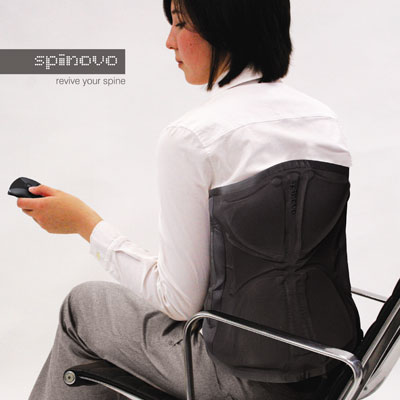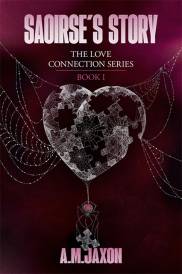2010 Australian Design Award

2010 Australian Design Award
Thirteen University students from around Australia have created revolutionary products for the medical industry, landing them on the world stage of innovation and design.
University of New South Wales student, Gonzalo Portas, has created the Pulse Heart Transportation System, a product which may change the transplant industry. Current methods of organ transportation aim to preserve the heart in transit, while Pulse sustains the life of the heart in its normal beating state. Gonzalo believes that Pulse can extend the life of an organ, achieve improved patient outcomes, increase the donor pool, boost the amount of viable hearts available for transplantation and ultimately reduce waiting times for those patients in need of a new heart.
Australia's graduating class of industrial designers and engineers is breaking new ground in product innovation, starting with a record number of inspiring concept designs entered into the 2010 Australian Design Award - James Dyson Award (ADA-JDA).
A total of ninety eight entries were submitted in the 2010 ADA-JDA, with the increase in numbers a clear indication of the significance now placed on this well established student award, the student category of the Australian International Design Awards (AIDA).
Australia's most notable design industry award program, the Australian International Design Awards is a division of Standards Australia, recognising and promoting product design and innovation excellence.
This year's emerging design stars of the ADA-JDA introduce to the market breakthrough product concepts from the fields of medicine, sport, transport, home, trade, and even recreation.
Inventions entered in this year's program range from an electronic pain relief garment for those with lower-back problems, to a revolutionary concept that prevents drivers from feeling speed bumps unless they are speeding. No doubt all entries this year will play a part in stirring the public's imagination as to what the future holds.
"It's always exciting to see the ground-breaking concepts and fresh ideas entered into the student category. Unlike professional designers who are restricted by budgets and design briefs, students have a license to explore new ground and think outside the box," says Stephanie Pemberton, Program Director of the Australian International Design Awards.
"For many graduates, entry in the Australian Design Award - James Dyson Award is the first step to a fulfilling industrial design career with a local or international manufacturer or design consultancy."
Commenting on the calibre and diversity of this year's entries, Ross Cameron, Managing Director of Dyson SEA was in high spirits: "Every year I am surprised at the excellent standard the award entries display and the extensive research the students put in. In many cases these student prototypes go well beyond what's expected from a university graduate and show real promise as a commercially viable product innovation, one that many manufacturers would be keen to snatch up."
The Australian Design Award - James Dyson Award brings student inventions to the international design stage. "It gives us a chance to celebrate the James Dyson Foundation's motto, 'encouraging young people to think differently, make mistakes, invent and realise their engineering potential'," says Mr Cameron.
Entries in the 2010 Australian Design Award - James Dyson Award closed in December. The 2010 Finalists will be announced in March with the Winners announced at the Australian International Design Awards ceremony in Sydney on Friday 4 June, 2010.
Interview with Justine Smith
Justine Smith has been named a finalist in the Australian Design Awards/James Dyson Awards. Justine designed the Spinovo, a medical innovation.
Spinovo, meaning 'new spine', is an electronic pain relief garment that has been designed to help relieve pain for chronic back pain sufferers. In contrast to other back pain products on the market, Spinovo offers a holistic approach to back pain by providing heating, cooling and transcutaneous electrical nerve stimulation (TENS) therapies as well as preventing back pain through biofeedback. Spinovo provides therapy through removable packs which clip into the garment and provides feedback through the remote control interface. What University and course are you studying?
What University and course are you studying?
Justine Smith: I've just graduated from the Industrial Design program at the University of New South Wales.
Can you share a little bit of information about your innovation, Spinovo?
Justine Smith: Spinovo is a garment designed to help relieve pain for chronic back pain sufferers. The garment has insertable sensors and therapy packs so the user can treat their pain through heating, cooling and electrical stimulation therapies. Users can also prevent postural-related back pain through monitoring posture and muscle fatigue with bend and electromyography sensors. Feedback from these sensors is delivered through the remote control.
What inspired you to research and design the Spinovo?
Justine Smith: My Dad's experience with trying to cope with back pain initially inspired me to research back pain. Once I was researching back pain, I couldn't find any products on the market that offered people multiple therapies and allowed them to use the product whilst on-the-go.
What research did you embark on before developing the medical innovation?
Justine Smith: I researched medical journals to understand back pain and looked online for the latest technologies that I could use in my product. I interviewed chiropractors, physiotherapists and a teacher of the Alexander Technique so that I could understand the nature of back pain from a variety of views. I also spoke with friends, family and colleagues who were suffering from back pain so that I could get a sense of the daily life for my end users.
Explain the development behind the Spinovo?
Justine Smith: My initial concept was to design a garment that offered the user multiple options in delivering therapies and preventative measures for back pain. The concept went through many stages and forms (from belts to vests) until I reached the final product, which still fits my initial idea.
Was there ever a moment you thought about giving up on the Spinovo?
Justine Smith: I almost decided not to do a major project at University, but I realised that it was a big challenge that I just didn't want to miss out on, so I'm glad I decided to give it a go. There were many problems encountered on the way - for me it was trying to get all the right components, but I never thought above giving up.
 What was your reaction when you were named as a finalist in the Australian Design Awards/James Dyson Awards?
What was your reaction when you were named as a finalist in the Australian Design Awards/James Dyson Awards? Justine Smith: I was very surprised and delighted- I wasn't even expecting to get beyond the first round.
Have you been amazed at what the other candidates have designed?
Justine Smith: Yes, I'm amazed with the other contenders' work. We don't have very long to work on these projects, so to see such a high standard of work is remarkable.
What have you learnt from this journey, so far?
Justine Smith: That hard work can pay off.
What's next for you? Are you in planning for another medical device?
Justine Smith: I'm currently working part time for a furniture company but I hope to be working for a design consultancy one day, so who knows what I'll be designing next!
If you could meet one person, who would it be?
Justine Smith: Madonna.
Interview by Brooke Hunter
MORE
- CELEBRATE!
- Coca-Cola Party Pontoon
- Bowie Unzipped - Anniversary Tour Starring Jeff...
- Snowman Bao Is Coming To Melbourne This Christmas
- Tramsheds for Kids Christmas Workshops
- NGV Kids Summer Festival
- ACMI A Grand Night In
- The Chameleons Announce First-Ever Australian Tour
- Hi-5 Summer Rainbows Show
- Shelley Segal Somebody Like You Launch Show
- Yothu Yindi, The Treaty Project, The Herd and...
- The Unbelievables
- Anna Segal Generation Snow
- Surfer Owen Wright Interview
- Katherine Smith OVO by Cirque du Soleil Interview
- Kate Just 2012 Realise Your Dream
- Emma Swift 2012 Realise Your Dream
- Sydney Film School Scholarship Call for Entries
- Jolie Herzberg 2012 Realise Your Dream email...
- Frankie Snowdon 2012 Realise Your Dream





